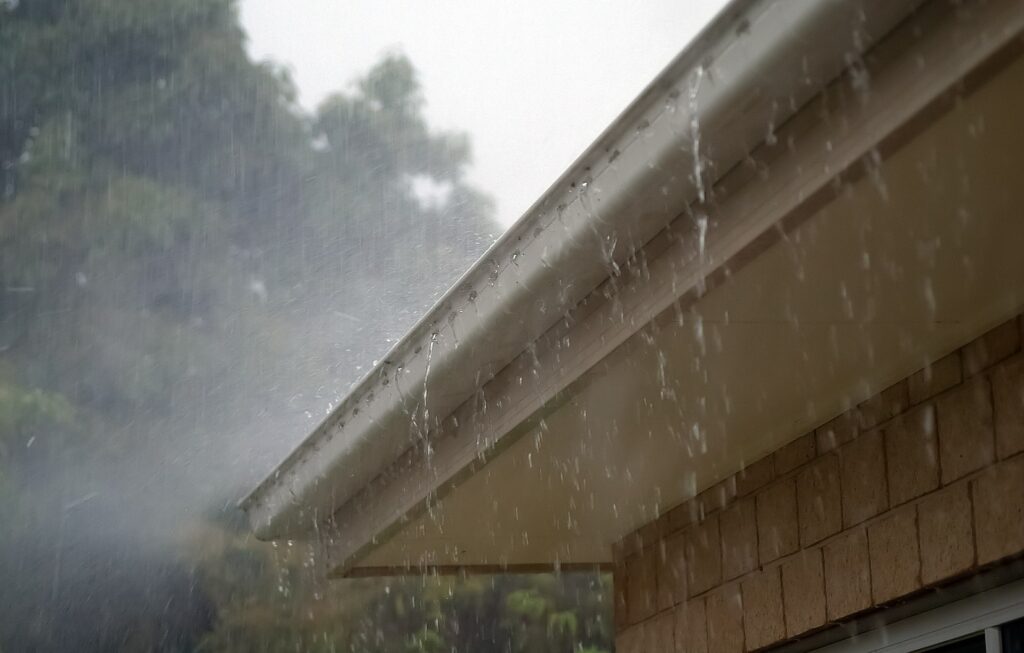Calm, dry, daylight, and 70° is ideal weather for roof replacement. Anything else can have an impact on the schedule or quality of your roofing project.
While the climate in the Puget Sound region is generally moderate, we do have some days that get quite warm or cold. And then there’s the rain; lots and lots of rain.
The roofing materials we use are designed to handle our marine climate for many years once they are installed. Unfortunately, installation is a fairly arduous task for both roofers and roofing products.
Weather not only has an effect on the health and safety of roofing technicians but on the lifespan and appearance of your roofing materials. Asphalt materials are more temperature-sensitive than some other roofing products, like wood, concrete, slate, or metal; but less sensitive than membrane or semi-liquid applications.
Application at hazardous temperatures can also void a product’s warranty.
Hot Weather Roofing
Temperatures over 80° can soften petroleum-based roofing materials like asphalt shingles to a point where they are more easily damaged.
Extra care should be taken to minimize work in the heat of the day. OSHA requires heat precautions for the crew to prevent dehydration, dizziness, and even hospitalization. Often our crews will start and end work earlier than usual if it is allowed by local noise ordinances.
Cold Weather Roofing
Should roof replacement be avoided during cold weather months? Not necessarily. It depends on the roofing material and how cold it really is.
Temperature can have an influence on the quality of your roof replacement. It doesn’t have to be below freezing for the temperature to impact your project, either.
- Most membrane products for low-slope areas can’t be applied below 45°.
- Below 40° asphalt shingles can crack when handled.
- Synthetic roofing materials are more forgiving, with installation down to 20°.
- Cedar shakes and standing seam metal are not very temperature sensitive materials.
Of course there is more to it than strictly the material type. A lot of people forget about roofing accessories, too.
- Some types of vents and flashing will crack with low temperatures, allowing a place for water to sneak in later.
- Many adhesives won’t stick until they are warmed to a sticking point. This means your project is more susceptible to the hazards of wind until that occurs, which can be days or even months later.
- Something as basic as caulk prefers temperatures between 40° and 80°; it may not come out of the tube or adhere properly when it gets too hot or cold.

Wet Weather Roofing
Can roofers work in the rain? Well, in much of the country, they do. Whether they should is a whole different question. There are a few jurisdictions where it is against code. It can be unsafe for the roofers and the roof.
The concern is that if roofing system components like the wood sheathing are wet, then where does that water go once your roof is finished? How long does it take to dry out a roof before it’s safe to start? How would you ever get a project done in a marine climate like this? We use the right materials at the right time and send trained teams of roofers.
In the Greater Seattle area where it can rain over 150 day per year, if we didn’t know how to work in damp weather we just wouldn’t get much done at all. A lot of the rain we get is just a mist or light drizzle and we can work right through it. We may need to postpone projects for heavier rain when it is a safety issue for the crew or your project. If that were to happen, we would certainly take any reasonable precautions.
Roof Replacement in Windy Weather
The average daily wind in our area is about 10 MPH; that is no problem whatsoever. At the opposite end of the spectrum, we can have storms up to 100 MPH which topples trees and tips over vehicles.
System components must stay where we put them, not behave like a kite. Smaller or heavier roofing materials like cedar shakes catch less wind than large sheets of relatively light roofing metal or underlayment. We must also be aware of our surroundings. If there are other hazards nearby, like tree branches or power lines, then we will need to take precautions. As long as we are able to work safely we are happy to do so.
Roof Replacement During Inclement Weather
While it can be frustrating, sometimes the best solution is just to wait. When delays arise we will communicate with you and get back on track as soon as possible. When workarounds are available, we can let you know that, too.
We send full crews of experienced technicians to complete your project as quickly as possible. When bad weather is expected, we only start as much as we can safely dry in. For example, we might just tear off half of the old roofing materials and then replace it on the same day instead of leaving a whole roof exposed overnight. This minimizes exposure to harsh weather, keeping both your home and our team safe.
Remember, we want to finish the project as much as you do. It’s how our crews feed their families. It’s how we turn homeowners into raving fans. We just won’t risk a second-rate roofing job and we appreciate that you feel the same.
